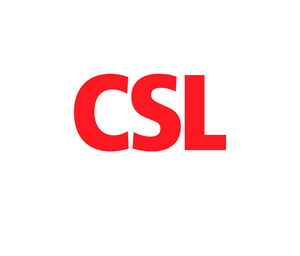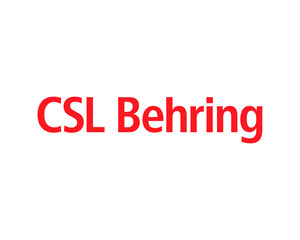FDA Approves Hizentra® (Immune Globulin Subcutaneous [Human] 20% Liquid) for the Treatment of Patients With Chronic Inflammatory Demyelinating Polyneuropathy (CIDP)
First and only subcutaneous immunoglobulin (SCIg) approved for the treatment of CIDP based on the largest controlled clinical study in CIDP
KING OF PRUSSIA, Pa., March 16, 2018 /PRNewswire/ -- Global biotherapeutics leader CSL Behring today announced that the U.S. Food and Drug Administration (FDA) approved Hizentra® (Immune Globulin Subcutaneous [Human] 20% Liquid) as the first and only subcutaneous immunoglobulin (SCIg) for the treatment of chronic inflammatory demyelinating polyneuropathy (CIDP) as maintenance therapy to prevent relapse of neuromuscular disability and impairment. The approval was based on data from the Phase III PATH (Polyneuropathy And Treatment with Hizentra) study, which is the largest controlled clinical study in CIDP patients to date. CIDP is a rare autoimmune disorder that affects the peripheral nerves and may cause permanent nerve damage.
"This new FDA approval for Hizentra marks a pivotal milestone for patients struggling with the disabling neurological effects of CIDP," said Dr. Andrew Cuthbertson, Chief Scientific Officer and R&D Director, CSL Limited. "As the first and only subcutaneous immunoglobulin therapy approved to treat CIDP, and studied in the largest controlled clinical trial for CIDP, Hizentra offers patients a more convenient treatment option with proven efficacy and the flexibility and freedom to self-infuse at home. CSL Behring is deeply committed to delivering innovative therapies to patients with rare and serious diseases like CIDP, and today we are proud to now offer a portfolio of immunoglobulin therapies for CIDP."
The PATH study demonstrated that the percentage of patients experiencing CIDP relapse or withdrawal for any other reason during SCIg treatment was significantly lower with Hizentra (38.6 percent on low-dose Hizentra [0.2 g/kg weekly]; 32.8 percent on high-dose Hizentra [0.4 g/kg weekly]; p values = 0.007 and <0.001 respectively) than with placebo (63.2 percent). Additionally, the PATH study demonstrated that patients on Hizentra reported fewer systemic adverse reactions (ARs) per infusion compared to IVIg treatment (2.7 percent versus 9.8 percent, respectively). In fact, 93 percent of the 4,225 total Hizentra infusions were free of any ARs.
"As a practicing neurologist treating patients with CIDP, I am excited to have a safe and effective subcutaneous treatment option to offer my patients who are interested in more treatment flexibility and control in their busy lives," said Dr. Todd Levine, Phoenix Neurological Associates.
In CIDP, the myelin sheath, or the protective covering of the nerves, is damaged, which may result in numbness or tingling, muscle weakness, fatigue, and other symptoms. The effects of CIDP can worsen over time, leading to significant activity limitations and a decreased quality of life. Approximately 30 percent of CIDP patients will progress to wheelchair dependence if not treated.
"Despite available treatment options, many CIDP patients continue to struggle with daily disease and lifestyle challenges, making continued research and innovation critical," said Lisa Butler, executive director of the GBS|CIDP Foundation International. "The approval of Hizentra offers patients who were once burdened by traveling to the infusion center or hospital the flexibility to self-administer their treatment at a time, place, and on a schedule that's convenient for them."
Hizentra is currently approved in 51 countries for the treatment of certain immune deficiencies. For more information about Hizentra, including the U.S. prescribing information, visit www.hizentra.com.
About CIDP
In CIDP, a rare autoimmune disorder that affects the peripheral nerves (those outside the brain and spinal cord), the myelin sheath, the protective covering of the nerves, is damaged. This may result in numbness or tingling, muscle weakness, fatigue, and other symptoms. CIDP effects can worsen over time, leading to significant activity limitations and a decreased quality of life. CIDP can occur at any age and is more common in men than in women. Approximately 30 percent of CIDP patients will progress to wheelchair dependence if not treated. In the U.S., it is estimated that the incidence of CIDP is up to two patients per 100,000 people each year,i with a prevalence of 40,000 people affected.ii
About Hizentra®
Hizentra (Immune Globulin Subcutaneous [Human] 20% Liquid), the first 20 percent SCIg developed for subcutaneous use, is registered in over 51 countries and approved to treat certain immune deficiencies. Hizentra, the world's most prescribed SCIg, has a proven track record of safety, efficacy, and tolerability and has over 4.8 million exposures worldwide since 2010.
Important Safety Information for the U.S.
Hizentra®, Immune Globulin Subcutaneous (Human), 20% Liquid, is indicated for:
- Treatment of primary immunodeficiency (PI) in adults and pediatric patients 2 years and older.
- Maintenance therapy in adults with chronic inflammatory demyelinating polyneuropathy (CIDP) to prevent relapse of neuromuscular disability and impairment.
- Maintenance therapy in CIDP has been systematically studied for 6 months and for a further 12 months in a follow-up study. Continued maintenance beyond these periods should be individualized based on patient response and need for continued therapy.
For subcutaneous infusion only.
- WARNING: Thrombosis may occur with immune globulin products, including Hizentra. Risk factors may include: advanced age, prolonged immobilization, hypercoagulable conditions, history of venous or arterial thrombosis, use of estrogens, indwelling vascular catheters, hyperviscosity, and cardiovascular risk factors.
- For patients at risk of thrombosis, administer Hizentra at the minimum dose and infusion rate practicable. Ensure adequate hydration in patients before administration. Monitor for signs and symptoms of thrombosis and assess blood viscosity in patients at risk for hyperviscosity.
Hizentra is contraindicated in patients with a history of anaphylactic or severe systemic reaction to human immune globulin (Ig) or components of Hizentra (eg, polysorbate 80), as well as in patients with immunoglobulin A deficiency with antibodies against IgA and a history of hypersensitivity. Because Hizentra contains L-proline as stabilizer, use in patients with hyperprolinemia is contraindicated.
IgA-deficient patients with anti-IgA antibodies are at greater risk of severe hypersensitivity and anaphylactic reactions. Thrombosis may occur following treatment with Ig products, including Hizentra.
Monitor patients for aseptic meningitis syndrome (AMS), which may occur following treatment with Ig products, including Hizentra. In patients at risk of acute renal failure, monitor renal function, including blood urea nitrogen, serum creatinine and urine output. In addition, monitor patients for clinical signs of hemolysis or pulmonary adverse reactions (eg, transfusion-related acute lung injury [TRALI]).
Hizentra is derived from human blood. The risk of transmission of infectious agents, including viruses and, theoretically, the Creutzfeldt-Jakob disease (CJD) agent and its variant (vCJD), cannot be completely eliminated.
The most common adverse reactions (observed in ≥5% of study subjects) were local infusion-site reactions, as well as headache, diarrhea, fatigue, back pain, nausea, extremity pain, cough, upper respiratory tract infection, rash, pruritus, vomiting, upper abdominal pain, migraine, arthralgia, pain, fall, and nasopharyngitis.
The passive transfer of antibodies can interfere with response to live virus vaccines and lead to misinterpretation of serologic test results.
Please see full prescribing information for Hizentra.
About CSL Behring
CSL Behring is a global biotherapeutics leader driven by its promise to save lives. Focused on serving patients' needs by using the latest technologies, we develop and deliver innovative therapies that are used to treat coagulation disorders, primary immune deficiencies, hereditary angioedema, inherited respiratory disease, and neurological disorders. The company's products are also used in cardiac surgery, organ transplantation, burn treatment, and to prevent hemolytic disease of the newborn.
CSL Behring operates one of the world's largest plasma collection networks, CSL Plasma. The parent company, CSL Limited (ASX:CSL; USOTC:CSLLY), headquartered in Melbourne, Australia, employs nearly 20,000 people, and delivers its life-saving therapies to people in more than 60 countries. For more information visit www.cslbehring.com and follow us on www.Twitter.com/CSLBehring.
i Laughlin R.S. et al. Incidence and prevalence of CIDP and the association of diabetes mellitus. Neurology. 7;73(1):39-45.
ii American Association of Neuromuscular & Electrodiagnostic Medicine (2017). Chronic Inflammatory Demyelinating Polyneuropathy. http://www.aanem.org/Patients/Disorders/Chronic-Inflammatory-Demyelinating-Polyneuropathy. Accessed March 2018.
SOURCE CSL Behring
Related Links
WANT YOUR COMPANY'S NEWS FEATURED ON PRNEWSWIRE.COM?
Newsrooms &
Influencers
Digital Media
Outlets
Journalists
Opted In






Share this article